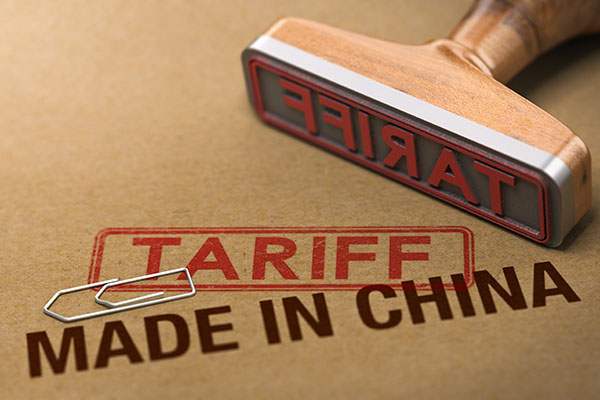Trade tension and uncertainty from tariffs puts supply chains on alert
When it comes to the seemingly never-ending state of the United States-China “trade war,” which has seen each nation, in a sense, attempt to out do each other, in the form of a game of levying and retaliating to tariffs, it is becoming more apparent that these actions are increasingly more and more likely to impact both consumers and retail supply chains.
That was recently made clear when the White House announced that current tariffs on $250 billion in Chinese goods will go from 25% to 30% on October 1, and new tariffs on $300 billion of Chinese goods taking effect on September 1 and December 15 will increase from 10% to 15%.
This latter round of tariffs is largely focused on consumer goods, including items such as smartphones, apparel and footwear laptop PCs, toys, and videogame consoles, among others.
And while these tariffs will take effect, not all will be live on September 1, with the USTR saying it will delay the pending 10% tariff, for certain articles, until December 15. These things include cell phones, laptop computers, video game consoles, certain toys, computer monitors, and certain items of footwear and clothing. As previously reported, President Trump said the delay until December 15 was attributed to some of these tariffs potentially having an impact on U.S. consumers, despite his long-held contention that the tariffs would be paid for by China.
A longstanding concern regarding tariffs among shippers is directly related to the uncertainty that tariffs have on supply chain planning and operations.
That was made very clear by David French, Senior Vice President for Government Relations, for the National Retail Federation.
“It's impossible for businesses to plan for the future in this type of environment,” said French. “The administration's approach clearly isn't working, and the answer isn't more taxes on American businesses and consumers. Where does this end?”
And Rick Helfenbein, president and CEO of the American Apparel & Footwear Association, put the current situation in even more stark terms.
“Clearly the Trump administration’s use of tit-for-tat tariff hikes are not part of any coherent strategy for China,” he said. “For two and a half years we have been promised a new and innovative approach, yet what we’ve been given is a 1930s trade strategy that will be a disaster for American consumers, American businesses, and the American economy. Meanwhile, the President has said he wants American businesses to stop working in China, yet he doesn’t seem to understand that moving a supply chain is incredibly complicated and expensive. It takes years to build relationships that meet compliance standards and deliver quality products, yet we have been given weeks and in this case days.”
While this new round of tariffs has not kicked in yet, a supply chain stakeholder told LM that the ripple effects will be broad, in terms of how it could impact supply chain and logistics operations and planning.
“The obvious is the hits to the ocean freight space,” said Jeff Brady, principal of Bravo Consulting. “What will the carriers do- shelve capacity in a rate play due to loss of revenue due to volume changes? Will it impact the US port side operations? Yes, creating more capacity and idle time with Union employees- expect to hear from them at some point as well.”
On the freight railroad side, with the continuous move to precision scheduled railroading (PSR) rail, the impact may be beneficial to some extent, Brady noted, adding that with less capacity, perhaps the rails can finally work out the kinks and stop impacting shippers with the recent downward trends in service, as the shift to PSR continues.
“When adding in the ongoing issues for shippers and all carriers (and the macro effect to network, infrastructure and capacity- not limited to, but including- the ridiculous amount of empty miles US truckers drive today already… expect this to continue if these (near) ad hoc and limited notice tariffs continue,” he explained. “Although, I personally support tariffs to an extent; the issue is that it impacts businesses that already have massive (far more than most will admit) issues with forecasting ability. Layer in the shipper side issues of budgeting and re-forecasting expense constantly and dealing with the massive variables we already see and deal with- and now, when you have procured commodities or finished goods from overseas and you are looking to forecast with some degree of accuracy; but now the C Suite wants to know the cost impact- we are all doing far too much guessing. This will be a tenuous situation as we enter the third quarter when the final push of inventories should occur for Peak Season, Holiday prep, and the fourth quarter. Stay tuned.”
The increasing amount of supply chain uncertainty tariffs bring and create for shippers is something which cannot be overlooked, according to Brittain Ladd, a global supply chain and strategy consultant.
“This results in shippers having to be prepared to see a reduction in order volume only to have to ramp up capacity if a tariff is reduced or removed, sparking increased demand,” he said. “Another issue is that tariffs often result in the sourcing of products from different countries, which can often lead to challenges in securing enough products. Sourcing from multiple countries requires increased transportation requirements across trade lanes and from ports to warehouses.”













